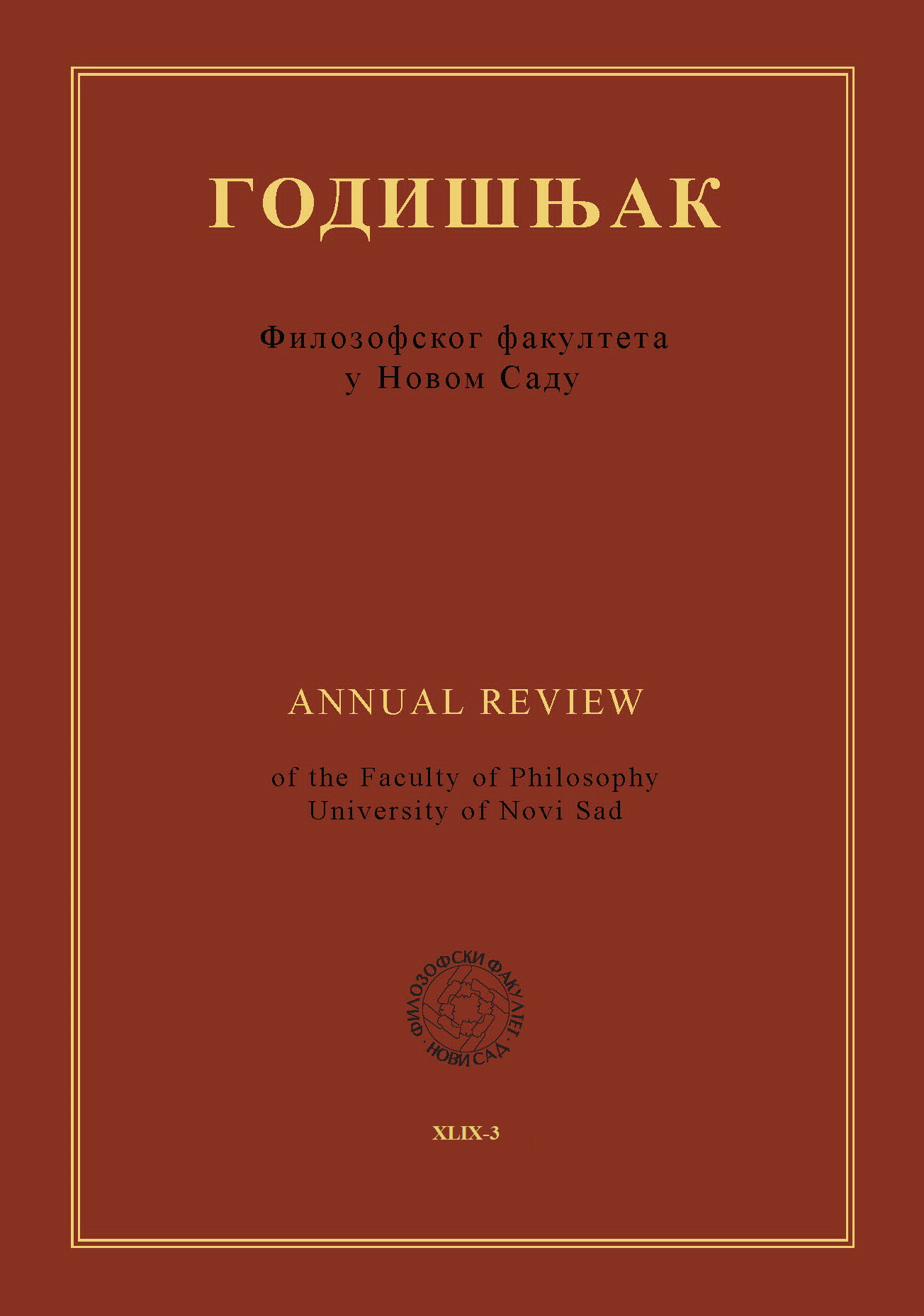THE USE OF HYPERTEXT IN ACADEMIC BLOGS WRITTEN IN ITALIAN AND ENGLISH - A CASE STUDY
Main Article Content
Abstract
Hyperlinks are frequently employed in academic writing as they provide an easy and convenient way for readers to access additional information. This can include relevant articles, background information, graphics, text, and other resources that help strengthen and develop the author's arguments. In addition, hyperlinks enable readers to obtain additional information from relevant sources, including those using various modes and media, and support the development of new hybrid digital genres for academic communication. Using online academic blogs written in Italian and English, this study examines how hyperlinks support writers' argumentation and the differences in how hypertext is used in these two languages. The analysis includes 888 hyperlinks in 8 randomly chosen academic blogs. The aim of the study is to present quantitatively and qualitatively the types of hyperlinks used in academic blogs, as well as the types of genres included through hyperlinks. Results demonstrate that authors in both languages use the same types of hyperlinks, although their distribution is slightly different. Finally, the study will provide knowledge for teaching the use of hypertext in academic writing in tertiary education courses to second language users.
Downloads
Article Details

This work is licensed under a Creative Commons Attribution-ShareAlike 4.0 International License.
References
Bhatia, V. K. (2004). Worlds of written discourse: A genre-based view. London, UK: Continuum.
Bondi, M. (2018). Try to prove me wrong: Dialogicity and audience involvement in economics blogs. Discourse, Context & Media, 24, 33-42. DOI: https://doi.org/10.1016/j.dcm.2018.04.011
Coleman, A. S. (2005). Academic blogs. The University of Arizona University Libraries. Downloaded on June 27, 2023 from http://hdl.handle.net/10150/105089.
Davies, J.–Merchant, G. (2006). Looking from the inside out: Academic blogging as new literacy. In: Knobel, M.–Lankshear, C. (Eds.) (2006). A New Literacies Sampler. New York: Peter Lang. 167-197.
De Maeyer, J. (2012). The journalistic hyperlink: Prescriptive discourses about linking in online news. Journalism Practice. 6(5–6), 692–701. DOI: https://doi.org/10.1080/17512786.2012.667273
Deuze, M. (2001) ‘Online Journalism: Modelling the First Generation of News Media on the Web’, First Monday. 6(10). https://firstmonday.org/ojs/index.php/fm/article/download/893/802?inline=1 DOI: https://doi.org/10.5210/fm.v6i10.893
Devitt, A. J. (2009). Re-fusing form in genre study. In: Giltrow, J.–Stein, D. (Eds.). Genres in the Internet. Amsterdam, Netherlands: John Benjamins. 27–47. chrome-extension://efaidnbmnnnibpcajpcglclefindmkaj/https://www.amydevitt.com/uploads/5/7/0/5/57051323/re-fusingformingenrestudy.pdf DOI: https://doi.org/10.1075/pbns.188.02dev
Engberg, J.–Maier, C. D. (2015). Exploring the Hypermodal Communication of Academic Knowledge beyond Generic Structure. In: Bondi, M.–Cacchiani, S. (Eds) (2015). Discourse In and Through the Media: Recontextualizing and reconceptualizing Expert Discourse. Newcastle upon Tyne, UK: Cambridge Scholars Publishing. 46-62.
Luzón, M.J. (2017). Connecting genres and languages in online scholarly communication: An analysis of research group blogs.
Written Communication. 34 (4), 441-471. https://doi.org/10.1177/0741088317726298 DOI: https://doi.org/10.1177/0741088317726298
Luzón, M. J. (2018). Constructing academic identities online: Identity performance in research group blogs written by multilingual scholars. Journal of English for Academic Purposes, 33, 24-39. doi: 10.1016/j.jeap.2018.01.004. DOI: https://doi.org/10.1016/j.jeap.2018.01.004
Hyland, K. (2011). The presentation of self in scholarly life: Identity and marginalization in academic homepages. English for Specific Purposes, 30 (4), 286-297. DOI: https://doi.org/10.1016/j.esp.2011.04.004
Maier, C. D.–Engberg, J. (2019). The Multimodal bridge between academics and practitioners in the Harward Business Review`s digital context: A multi-levelled qualitative analysis of knowledge construction. In: Luzón, M. J.–Pèrez-Llantada, C. (Eds.) (2019). Science Communication on the Internet: Old genres meet new genres. Amsterdam / Philadelphia: John Benjamins Publishing Company, 131-151. https://doi.org/10.1075/pbns.308.07mai DOI: https://doi.org/10.1075/pbns.308.07mai
Mauranen, A. (2013). Hybridism, edutainment, and doubt: Science blogging finding its feet. Nordic Journal of English Studies, 13 (1), 7–36. DOI: https://doi.org/10.35360/njes.274
Nelson, T. (1965). A File Structure for the Complex, the Changing, and the Indeterminate. ACM 20th National Conference – Proceedings. Cleveland: Ohio, 84-100.
Oblak, T. (2005). The lack of interactivity and hypertextuality in online media. Gazette: The International Journal for Communication Studie, 67 (1), 87–106. DOI: 10.1177/0016549205049180 DOI: https://doi.org/10.1177/0016549205049180
Petrič, G. (2004). Hypertextuality of the Slovenian World Wide Web. Metodološki zvezki, 1(2), 469-489. DOI: https://doi.org/10.51936/gshx9467
Shapiro, A.–Niederhauser, D. (2004). Learning from Hypertext: Research Issues and Findings. In: Jonassen, D.–Driscoll, M. (Eds.) (2004). Handbook of Research on Educational Communications and Technology. New York: Routledge. 603-618.
Stroobant, J. (2019). Finding the news and mapping the links: a case study of hypertextuality in Dutch-language health news websites. Information, Communication & Society, 22 (14), 2138-2155, DOI: 10.1080/1369118X.2018.1477971. DOI: https://doi.org/10.1080/1369118X.2018.1477971
Zou, H. J.–Hyland, K. (2020). “Think about how fascinating this is”: Engagement in academic blogs across disciplines, Journal of English for Academic Purposes, 43, 100809, https://doi.org/10.1016/j.jeap.2019.100809 DOI: https://doi.org/10.1016/j.jeap.2019.100809




